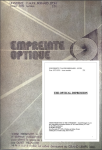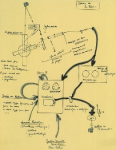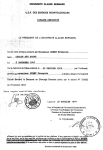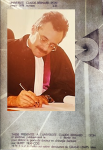1973 thesis
My thesis « Optical Impression» in all its forms
This page is devoted only to my 1973 thesis “Optical Impression”:
Ref. bibliographique à utiliser :
Duret, F. Optical Impression. in (UER) Faculty Odontology. Claude Bernard University. Lyon (France) thèse DDS n° 231, pp 288, 76 fig. 308 biblio.ref. 1973-74
Or
ww.francoisduret.com
It just seems useful to clarify a point that is often forgotten :
It was in December 1970 that I came to the idea that the «digitalization of the dental world» was the only possible solution to solve the recurrent imprecision of all the methods used in medicine at that time. I am also sure that Artificial Intelligence can be applied to it according to Alan Turing through computers and their programs.
That’s why I called my thesis «Optical Impression» meaning «thanks to this unavoidable door, digitalization will allow us to enter the digital world with all its power and whatever the means»
To convince you of this, I encourage you to read the end of chapter 1 (pages 48 to 71) because I explain that it is in the thermodynamics of systems in fundamental physics that I think I have found the explanation and the solution to all our problems.
It is not, as I read too often, by transferring (at the age of 22!) industrial systems that I came up with this idea (devices that did not yet exist, such as the internet, clouds, etc.).
So you have in this page successively by pressing one of the 5 buttons:
1 – My 1973 “Optical Impression (Empreinte Optique in french)” thesis. This document, considered by many as the founder, is exactly the scanned copy that I used during my public presentation with his faults, his candid drawings and his sentences filled with all the audacity of a man of 22 years still full of conviction.
2 – This same thesis translated into English.
3 – Some official documents accompanying around before, during and after the public présentation (between 1969 and 1976).
4 – A series of important drawings from this thesis to which I made recent comments at my conference in Geneva in 2020.
5 – Finally, a summary/analysis updated in 2021, reducing to twenty pages the 300 pages that are now very tedious to read.





